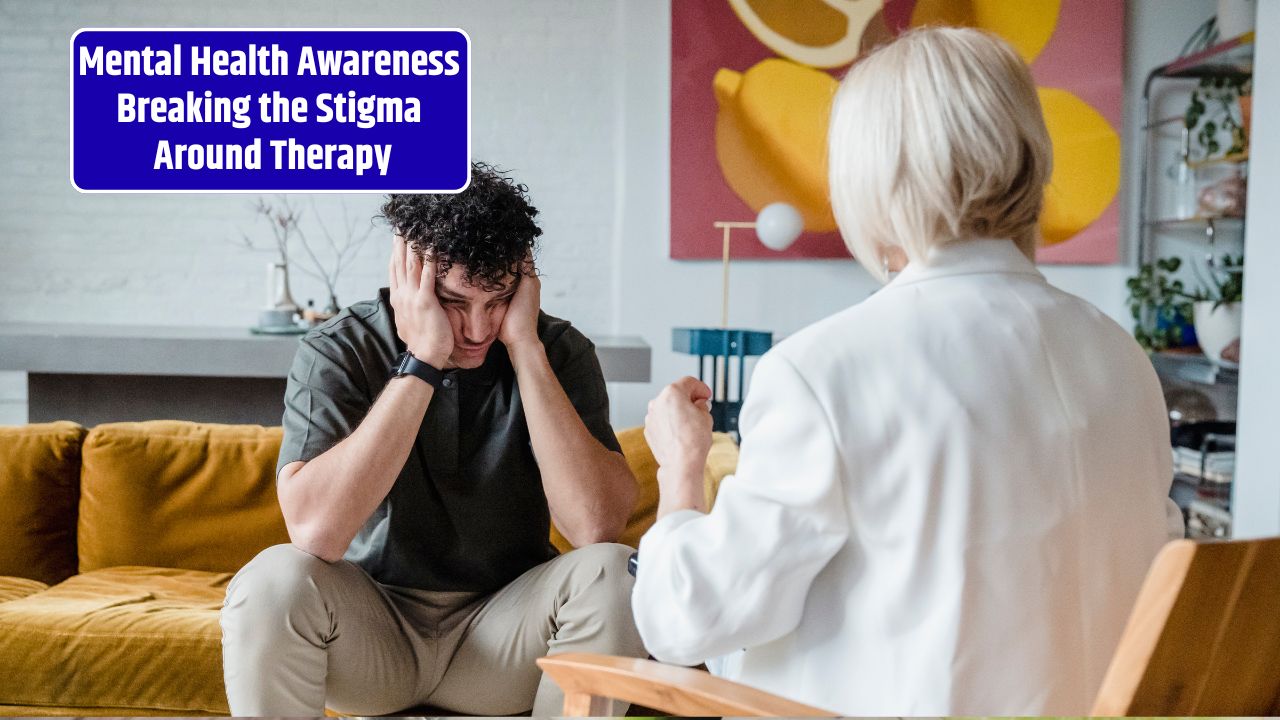Walk into any coffee shop and listen closely—you’ll hear people casually talking about their gym sessions, new diets, or even sleep trackers. But therapy? Still whispered, if it’s mentioned at all. For years, mental health has lived in the shadows, tangled up in stigma, silence, and misconceptions. And yet, more than ever, people are realizing therapy isn’t a weakness; it’s a tool for survival, growth, and resilience.
Why Mental Health Awareness Matters
The statistics are hard to ignore. According to the National Institute of Mental Health (NIMH), nearly 1 in 5 U.S. adults live with a mental illness, ranging from anxiety and depression to bipolar disorder and PTSD. Despite this, many delay or avoid treatment because of fear of judgment. That hesitation can worsen symptoms, leading to higher risks of substance abuse, job instability, and even suicide.
The conversation has shifted somewhat in the past decade, thanks to campaigns, celebrities sharing their struggles, and schools introducing mental health education. But stigma lingers, especially in workplaces and certain cultural communities.
The Cost of Silence
Beyond the emotional toll, untreated mental health conditions carry a heavy financial burden. The World Health Organization (WHO) estimates depression and anxiety alone cost the global economy $1 trillion each year in lost productivity. In the U.S., mental health-related absenteeism and presenteeism (showing up but unable to perform) drain billions from employers annually.
On a personal level, untreated issues often snowball—leading to higher medical costs, strained relationships, and reduced quality of life. The silence doesn’t just hurt individuals; it hurts society.
Why Therapy Works
Therapy isn’t about lying on a couch while someone scribbles notes. It’s about having a trained professional help you process emotions, identify patterns, and build coping strategies. Cognitive-behavioral therapy (CBT), for example, is proven to reduce symptoms of depression and anxiety. Group therapy builds community. Even short-term counseling during tough life transitions can be life-changing.
It’s not one-size-fits-all. For some, therapy looks like weekly sessions. For others, it’s periodic check-ins. What matters is access—and the willingness to take that first step.
Breaking the Stigma
Stigma thrives on myths. Here are some common ones—and the truths behind them:
| Myth | Reality |
|---|---|
| “Therapy is only for ‘crazy’ people.” | Therapy is for anyone dealing with stress, grief, or wanting self-growth. |
| “I should handle problems on my own.” | Asking for help is a strength, not a weakness. |
| “Therapy is too expensive.” | Options include insurance-covered sessions, community clinics, or online therapy platforms. |
| “Talking won’t fix anything.” | Evidence-based therapy changes thought patterns and behaviors. |
| “Only medication helps.” | Therapy and medication together often provide the best outcomes. |
Real Stories, Real Change
Meet Sara, 29, who grew up in a household where therapy was “taboo.” After battling panic attacks in silence, she finally sought counseling. “It was like unclogging a pipe—I could breathe again,” she says. Or James, a corporate manager who kept his depression hidden until workplace burnout forced him into medical leave. Therapy not only helped him recover but also reshaped how he leads his team, fostering openness instead of fear.
These aren’t isolated stories. They’re part of a quiet revolution where people reclaim control by speaking openly and seeking support.
The Role of Employers and Schools
Workplaces and schools are frontline players in normalizing therapy. Employee assistance programs, mental health days, and training managers to spot warning signs all help. Schools introducing counselors and open discussions around stress give young people tools they’ll carry for life.
Moving Forward: A Cultural Shift
Breaking stigma isn’t about one campaign or one month of “awareness.” It’s about everyday conversations—friends checking in on each other, families discussing mental health like they do physical health, and leaders modeling vulnerability. When therapy becomes as normalized as annual check-ups, stigma will finally lose its grip.
FAQs:
Does therapy always mean long-term sessions?
No. Some people need just a few sessions, while others benefit from ongoing support.
Can online therapy be as effective as in-person?
Yes. Studies show teletherapy can be just as effective for many conditions, especially anxiety and depression.
Is therapy confidential?
Yes, with rare exceptions involving safety concerns (like threats of harm to self or others).











